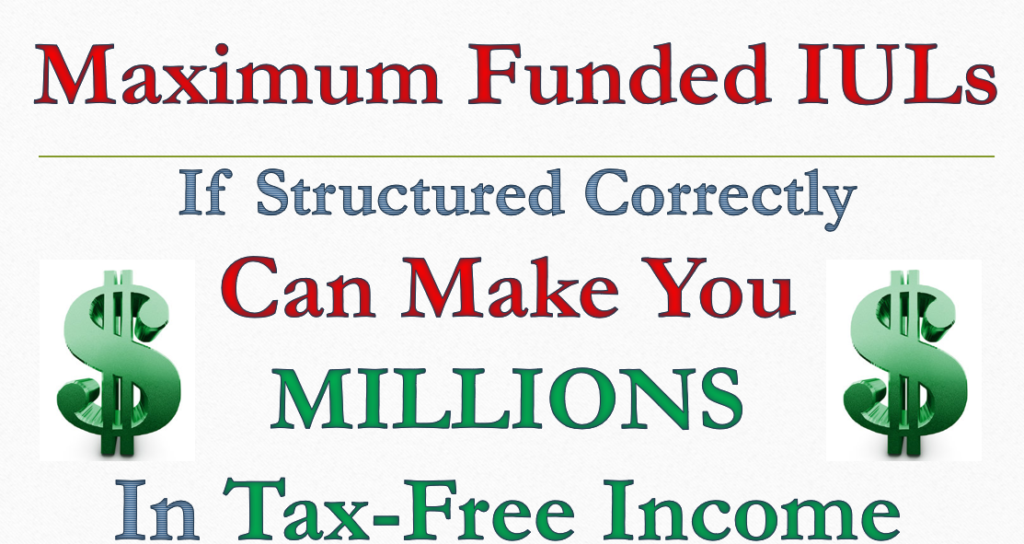
A Maximum Funded Indexed Universal Life (IUL) is a type of life insurance policy that allows policyholders to allocate a significant portion of their premium payments toward building cash value within the policy. It combines the features of a traditional universal life insurance policy with the potential for cash value growth tied to the performance of an underlying stock market index, such as the S&P 500.
Here are some key features and characteristics of a Maximum Funded IUL:
- Premium Payments: Policyholders pay premiums, which can be flexible in terms of timing and amount within certain limits. In the case of a Maximum-Funded IUL, the policyholder typically pays the maximum allowable premium to maximize the cash value component of the policy.
- Cash Value Accumulation: A portion of the premium payments is directed toward building cash value within the policy. This cash value can grow over time, and it has the potential for tax-deferred growth, meaning you won’t owe taxes on the gains as long as they remain within the policy.
- Index-Based Growth: The cash value growth is often tied to the performance of an underlying stock market index. When the index performs well, the cash value can increase, but there is usually a cap or a participation rate that limits the extent to which the policy can benefit from market gains. This provides a degree of downside protection.
- Death Benefit: Like other life insurance policies, an IUL provides a death benefit that is paid out to the beneficiaries upon the policyholder’s death. The death benefit is generally income-tax-free to the beneficiaries.
- Flexibility: Policyholders have some flexibility in managing their policy, including adjusting premium payments, choosing the index for cash value growth, and accessing cash value through policy loans or withdrawals.
- Tax Benefits: The cash value growth in an IUL is typically tax-deferred, and policy loans or withdrawals may be income-tax-free up to the amount of premiums paid into the policy. However, policyholders should be aware of potential tax implications and consult with a financial advisor or tax professional.
It’s important to note that while a Maximum-Funded IUL offers the potential for cash value growth and death benefit protection, it also comes with fees and charges, and the actual returns on the cash value may be lower than expected due to caps and participation rates. These policies can be complex, so it’s crucial to carefully evaluate your financial goals and consult with a financial advisor before purchasing one to determine if it aligns with your long-term financial plan.
At the “Life Insurance Safe Zone,” our primary IUL has limited fees and no caps on the IUL we recommend. In addition, the downside is capped at a plus .25% gain. So, there is no fear of losing any principal no matter how bad the market drops. Can your current investments claim that?
